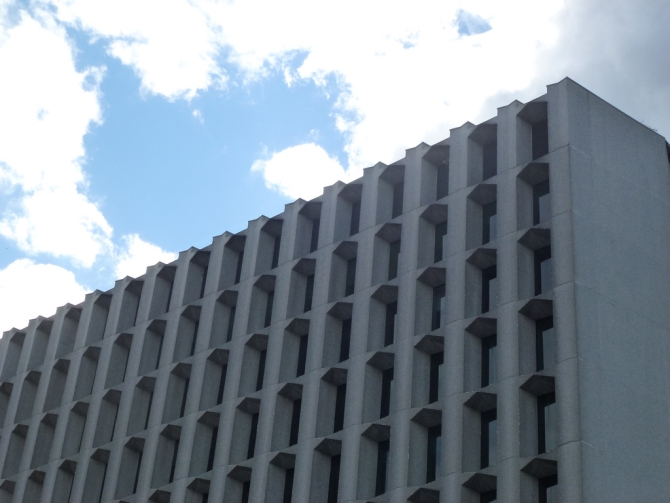A 1970’s Manchester commercial block — which featured as a backdrop in several episodes of the television science fiction crime drama Life on Mars — is to get a £1.5m upgrade investment.

LaSalle Investment Management has already spent around £2m on the 14-storey Hexagon Tower since acquiring the building in 2008. “We are planning a further £1.5m investment for the property over the next 18 months to enable it to continue as a high quality, specialist environment for a vibrant and forward thinking community,” explained associate director Chris Mitchell.
Surrounded by the north Manchester suburbs of Blackley and Crumpsall — and with its roots firmly embedded in the industrial heritage of the area — the 172,000sq ft block and adjoining building provide serviced office and laboratory accommodation for science and tech orientated businesses.
One long-term tenant is chemicals manufacturer, Lubrizol, which services companies across Asia and the Americas. “Innovation in commercial or academic science is integral to the economic identity of the north west, and especially Manchester,” said executive Dr Peter Bloyce. “We are proud to work within that heritage, and to have the support and facilities to go forward and trade our products across many diverse markets worldwide.”
In January the Hexagon Tower was incorporated into the Business Environments for Science and Technology (BEST) Network, a private pension fund portfolio managed by LaSalle which includes a combination of both well-established science and technology parks and those undergoing investment to attract high-technology activities.
“Few businesses work well in isolation,” said Mitchell. “They need support, flexibility and investment from a landlord. Inspiration is vital, too, and that comes from sharing ideas with other like-minded businesses. Make sure those factors are in place and we’ll be able to turn the great ideas coming out of the UK into great businesses.”
When Modernist architect Richard Seifert was commissioned to design the building by the site owners ICI in 1971 his brief was to “encapsulate the science of the area”. He did so by designing its windows in the shape of a hexagon to represent the chemical compound Benzene —the basis of synthetic dyes that the site was famous for producing.
The building was once the headquarters of ICI’s colours division and was the centrepiece of a 500-acre industrial site employing 1,600 people. Its laboratories not only lead the way in colour breakthroughs for the commercial fabric market, but its scientists also created new chemicals for film processing and colouring.
The site’s chemical heritage goes back as far 1785 with the establishment of the Borelle Dyeworks. In 1865 Berlin-born Ivan Levinstein purchased the site to develop and produce synthetic dyes. He later merged the site with British Dyes Ltd to become the British Dyestuffs Corporation which subsequently became Imperial Chemical Industries.
Many people, however, will recognise the block from the BBC crime series Life on Mars in which a detective from 2006 is knocked over by a speeding car and wakes to find himself in 1973 — coincidentally the year the Hexagon Tower was completed.
Previous Post
MediaCityUK Outlet Store reports Strong Rise in Footfall